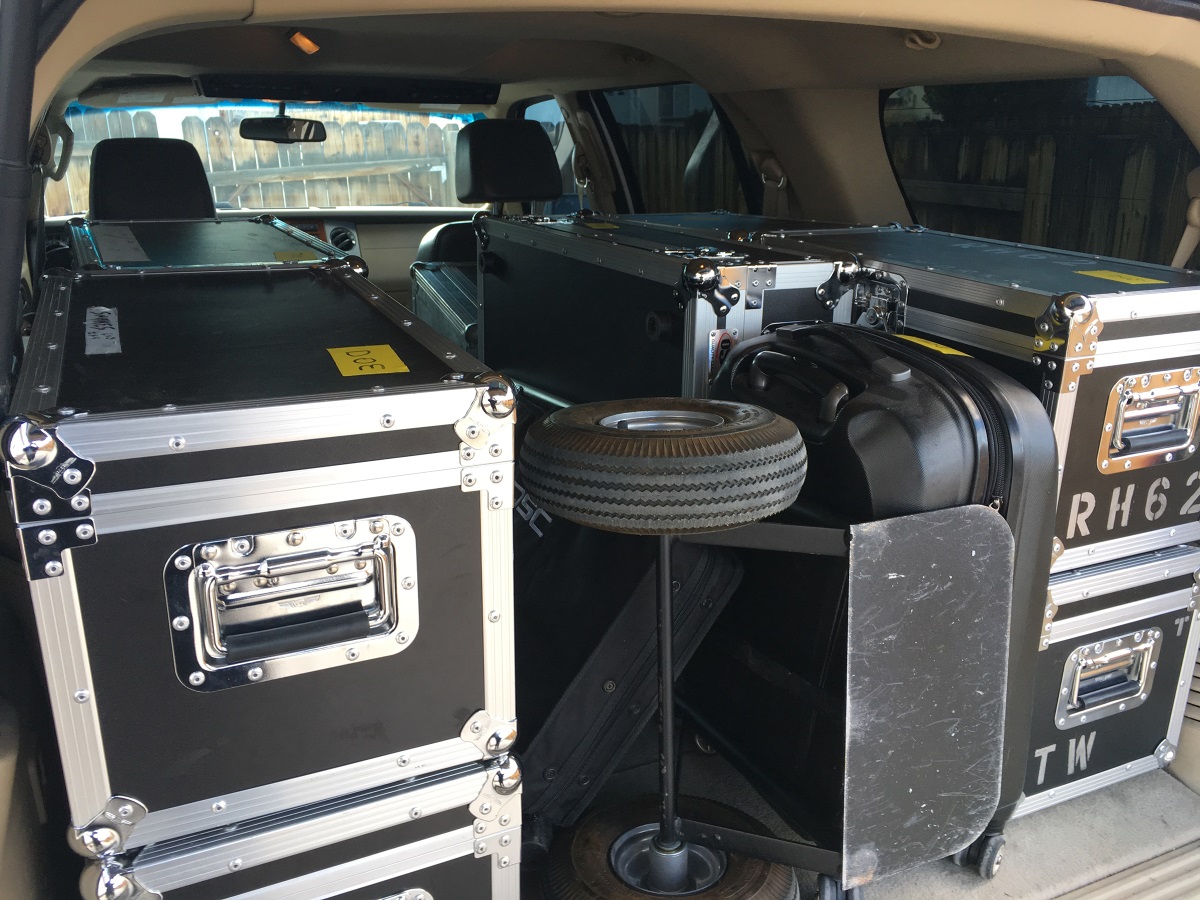
Staple Of The Genre
Road trunks and cases are the most common way to store and transport gear. My company stocks three types of trunks. The first is a small flight-case-style model from Audiopile Distributing (MO24) available in styles that include standard as well as options for a lift-out tray and a mic case.
Some of these are always loaded with stuff for smaller gigs like meetings while others sit empty and are loaded out for a specific show. We like them because they fit inside our larger trunks and you can easily stack three or four on a hand truck and roll them into the venue.
The second type of trunk fits specific pieces like stage monitors. We build them in-house out of plywood, with most sizes having wheels. The third type are larger units we call “Cadillacs.” Built from 3/4-inch plywood, they have heavy-duty wheels and can hold a lot of inventory, including smaller sized road cases.
Some of our trunks are pre-configured for specific usage, such as carrying only AC cables in five different lengths as well as quads, power strips and rolls of gaffers (gaff) tape. Others sit empty at the shop and are filled as needed. When a trunk is loaded, a strip of gaff tape is placed across the lid listing all contents so the crew immediately knows what’s inside. They also clearly see where all gear should go following the show.
Trunks are usually built to “truck pack” dimensions based on a box truck with a width of 90 inches. Meanwhile, 22.5 x 22.5 inches is considered a “quarter pack” (a.k.a., “cube”) size, as four units will fit side by side.
Additional options include “third packs” with a 30-inches-long dimension and “half packs” offering a 45-inches-long dimension. Many third and half packs are also 22.5 or 30 inches wide so they can be turned either way for an easier, more convenient truck pack. Many are also sized to stack up to three high, and some even have fixed or removable dividers so the end user can separate cables and other items.
It goes without saying but I’ll say it anyway: trunks and cases need PM at least once per year. Check the casters and make sure they’re well secured to the case and grease any fittings. Inspect all latches and hinges, and lubricate as needed. Also check for damage to walls, metal edging extrusions and foam (if any). We’ve found the need notice to re-paint and re-stencil our more heavily used trunks every three or so years, with larger ones getting new casters every five years.
Our Cadillacs get so heavy (up to 600 pounds for some shows) that pushing them up a ramp is impossible for two people, so we’ve installed powered winches inside the boxes of our trucks. They’re from a company called Harbor Freight and are relatively in expensive, mounted on either the front cargo wall, or more recently, on a thick wood beam that in turn is mounted in E Track sockets spanning across the front of the box.
Spanning The Gap
The last moving item we can’t live without is a dock plate. For trucks that are “dock height” (the average dock in the U.S. is between 48 and 52 inches above ground level) a bridging plate is used to span the gap between the rear of the truck and the dock surface, as there are usually rubber bumpers that stick out on both truck and dock to reduce damage).
We’ve also used dock plates when there’s a curb we need to get over to access to a sidewalk. Most dock facilities have their own plates or leveler (a built-in dock plate that can adjust to most height trucks) but sometimes the only dock plate has been stolen or is in use by another truck.
After the gig when the truck gets back to the shop, more work commences. As noted earlier, all trunks and gear are inspected before going back to their places in the warehouse. Simply it comes down to this: Getting the gear there and back is just one piece of the puzzle – it all needs to work optimally as well.
